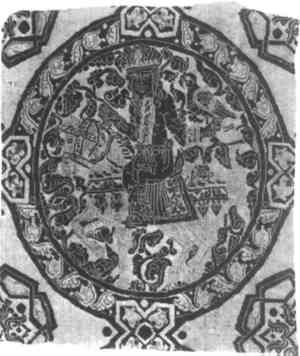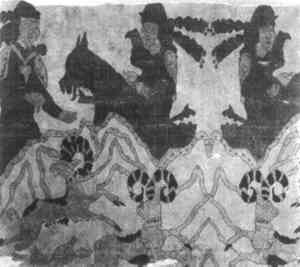THE DETECTION OF METALLIC MORDANTS BY ENERGY DISPERSIVE X-RAY SPECTROMETRY
R.J. Koestler, N. Indictor, & R. Sheryll
1 INTRODUCTION
THE SCIENTIFIC AUTHENTICATION OF HISTORICAL material is a difficult and controversial process. It is impossible strictly speaking to prove the authenticity of any object based on technical information, although it is sometimes possible to find the chronological age of the material employed. The manufacture of the object can rarely be dated with absolute certainty or precision based solely on scientific observations, and the dating of both the material and the manufacture can never be proved since it is possible to imagine modern craftsmen with a knowledge of ancient technology. The darker side of this pursuit may have much clearer and straight-forward results: it is sometimes possible to prove that an object or material is other than it purports to be by the objective dating of the material or by discovery of a manufacturing procedure inconsistent with the purported age of the object. Sometimes documentation can date an object and place it unambiguously in its historical context. Most frequently it is necessary to come to a conclusion concerning authenticity by means of considerations from more than one discipline—stylistic analysis, historical documentation, elemental analysis, visual and microscopic examination—which, taken together, present a picture consistent with a particular time, place, workshop or worker. Reading all these cues to form a coherent and consistent picture is gradually becoming more and more difficult owing to the high level of specialization needed to master the several disciplines involved. The collaboration of scientists and art historians becomes especially necessary in problem areas where contradictory evidence and opinions give an ambiguous assessment.
Such a problem area is found in a group of silk textiles usually referred to as “Buyid Silks” (see Figs. 1–4). These silks are said to have been found in 1925, during excavations in Bibi Shahr Banu, near Rayy, Persia. Some of these silks received extensive technical scrutiny with respect to pattern, calligraphy, use, weaving techniques and dye analysis in 1973–74.1,2 The absence of decisive pronouncements concerning the chemical analyses of the textiles was most unfortunate; analytical methods employed and uncertainties reduced the value of objective statements concerning authenticity. Dyes were analysed by thin layer chromatography and were matched with chromatograms of known dyes. The present day state of the art which would utilize high performance liquid chromatography (HPLC) or gas chromatography-mass spectrometry (GC-MS) combinations should give identifications of the dyes (permitting smaller samples than earlier studies) with the likelihood of a more complete structure identification.3 Carbon-14 dating gave results for the textiles sampled which proved to be uninterpretable, corresponding to neither the 20th century A.D. nor to the 11/12th century A.D. The present day state of the art for C-14 analysis permits analysis of much smaller samples with no larger uncertainty.4 A large sampling of different textiles should be submitted to several laboratories. Finally, metallic mordants were not determined in these studies.
Fig. 1.
(upper left). Fragment with equestrian King Falconer. Iran or Iraq, Abbasid Period, 9th C.A.D. The Cleveland Museum of Art, Purchase from the J.H. Wade Fund.
 |
Fig. 2.
(upper right). Fragment. Iran, Buyid Period, 10th C.A.D. The Cleveland Museum of Art, Purchase from the J.H. Wade Fund.
 |
Fig. 3.
(lower left). Fragment. Iran, Abbasid Period, 9th C.A.D. Cleveland Museum of Art, Purchase from the J.H. Wade Fund.
 |
Fig. 4.
(lower right). Fragment. Iran, Abbasid-early Buyid Period, early 10th C.A.D. Cleveland Museum of Art, Purchase from the J.H. Wade Fund.
 |
In recent studies in our laboratory the feasibility of detecting mordants on textiles has been explored by exposure of small samples to the high energy electron beam of a scanning electron electron microscope (SEM) with subsequent detection by energy dispersive x-ray spectrometry (EDS). Modern mordanted samples of silk, cotton, and wool were analysed successfully for aluminum, iron, copper, tin, and chromium.5 In Part I of this study cochineal dyed wool samples mordanted with the same mordants were also successfully analyzed for these elements. In this part, results are reported for a small number of “Buyid Silks” now in the Cleveland Museum of Art. Textiles sampled are pictured in Fig. 1. Each sample was taken from uniformly colored threads of the textiles and were analysed by EDS for the presence of metallic elements. The metallic elements found in the samples were calcium, iron, aluminum, silicon and potassium. No evidence of chromium, copper, tin, or zinc was found. These results are compared to results obtained for modern textiles.5
|



